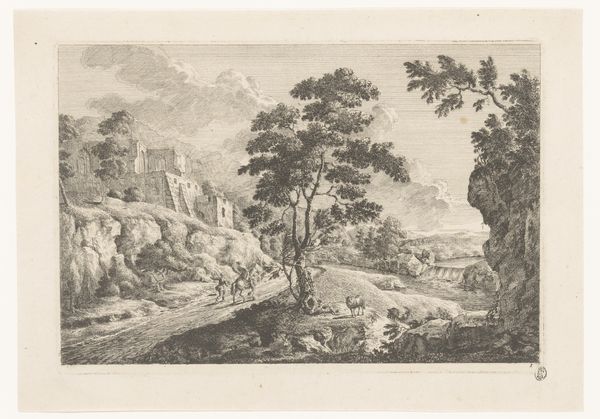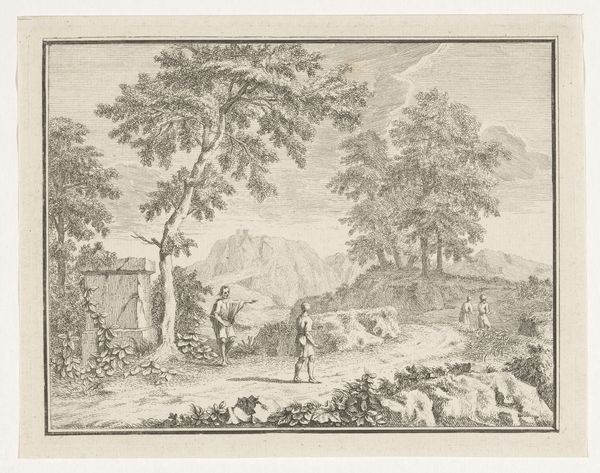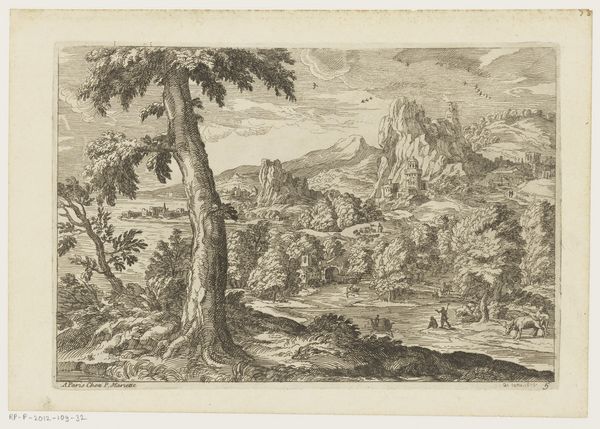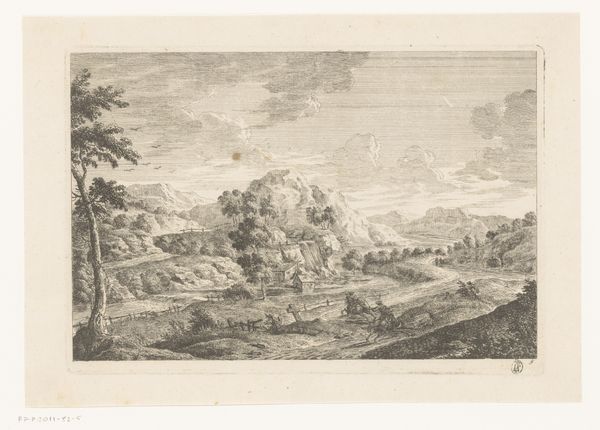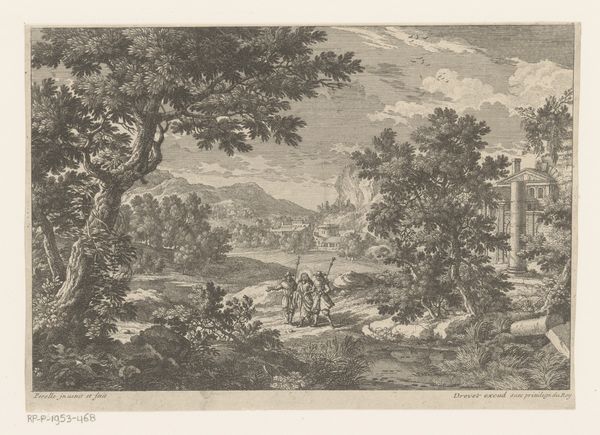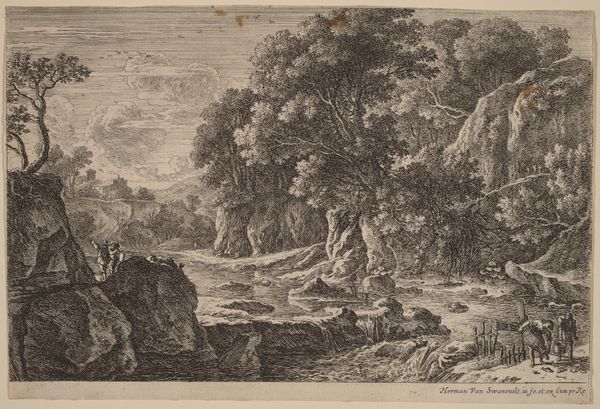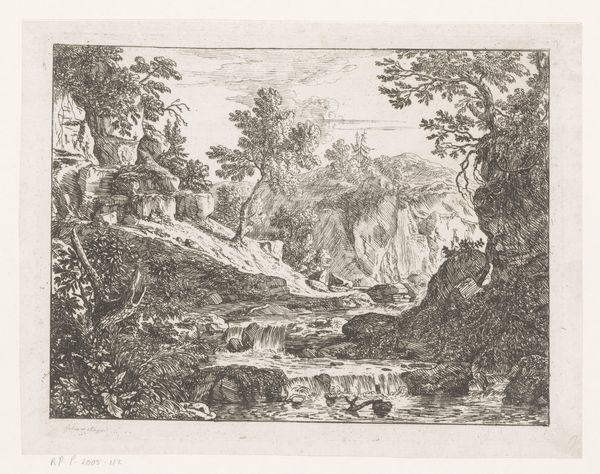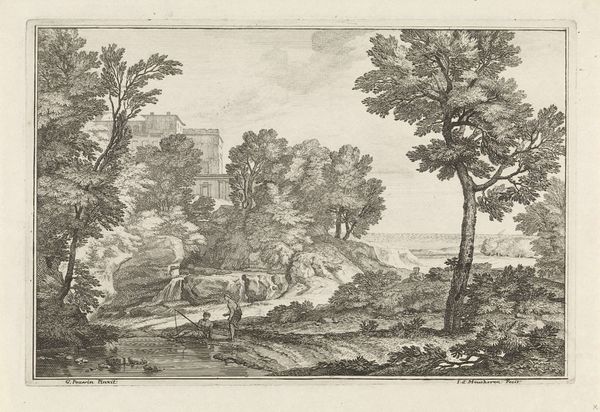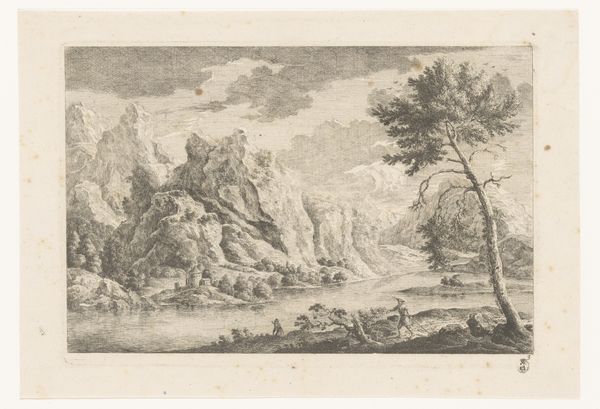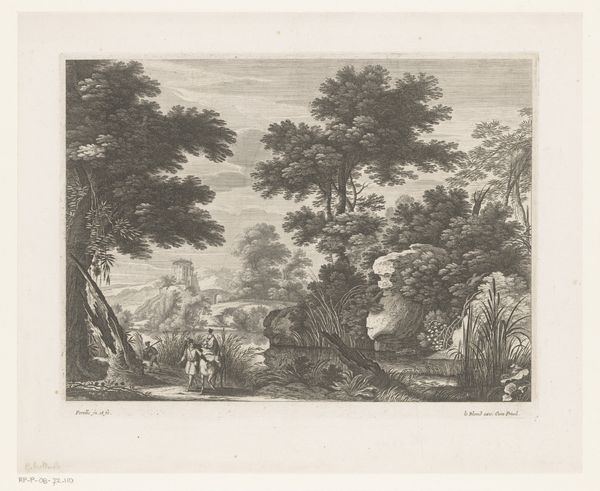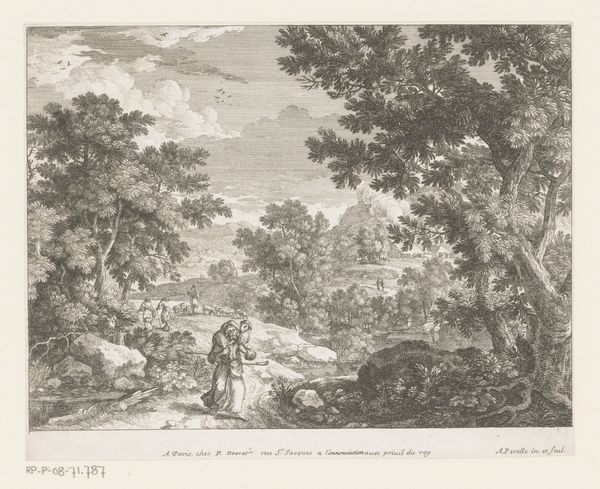
Arcadisch landschap met twee in de schaduw rustende reizigers 1713 - 1775
0:00
0:00
louisfabritiusdubourg
Rijksmuseum
print, engraving
#
baroque
# print
#
landscape
#
genre-painting
#
engraving
Dimensions: height 145 mm, width 184 mm
Copyright: Rijks Museum: Open Domain
Curator: Editor: We’re looking at "Arcadian Landscape with two travelers resting in the shadow", created between 1713 and 1775 by Louis Fabritius Dubourg. It's an engraving. I'm struck by how idyllic the scene is, yet it also feels quite manufactured. What strikes you when you look at it? Curator: What I see here is the result of very particular modes of production. The printmaking process itself, the copper plate, the ink, the paper, all these materials extracted and refined. We often think of "Arcadia" as this untouched paradise, but this image is a commodity. Someone invested in producing it, someone else consumes it. How does the medium—engraving—influence your perception of the scene? Editor: I suppose the precision of engraving, all those fine lines, does lend itself to idealizing the landscape, creating a sense of control. It is far from spontaneous. Curator: Exactly. And who benefits from this control? Landscape prints like these were popular among the bourgeoisie. Consider the power dynamic: enjoying idealized representations of leisure while possibly overlooking the labor required to sustain that lifestyle. The very act of consuming the print becomes a form of participation in that system. How do you see the figures fitting into this? Editor: They are taking a break from their labor. Are you saying this idealized version of the Arcadian Landscape is not what the production was actually like for them? Curator: Precisely. The art becomes a symbol for privilege but obscures the means by which that privilege is achieved. It invites reflection on the cost of idealized consumption. It reminds us that artistic creation isn't detached, but firmly situated within a social and economic system. Editor: That’s fascinating. I never thought of it in terms of material production before; it really does change how I see the image. Curator: Seeing art through this lens makes one mindful of not only how it is created, but also the socio-economic system that is implicit within.
Comments
No comments
Be the first to comment and join the conversation on the ultimate creative platform.
